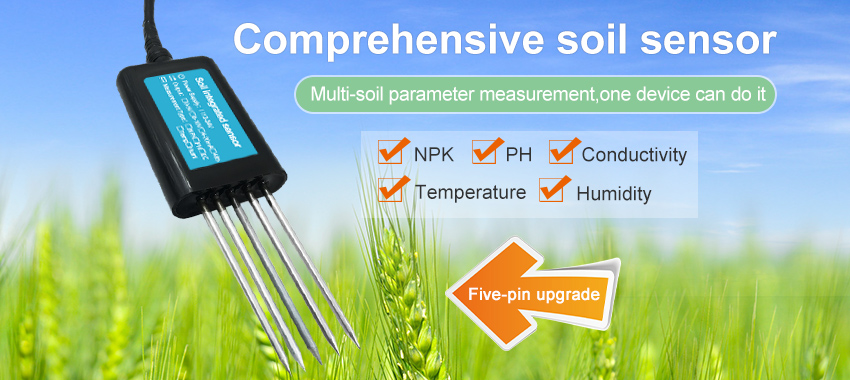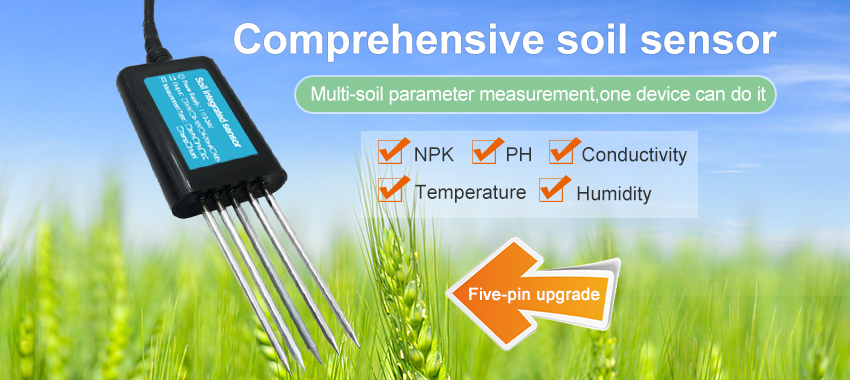In today's rapidly advancing agricultural landscape, optimizing crop growth is vital to meet the increasing demand for food production. To achieve this goal, farmers and researchers are constantly seeking innovative solutions. One such solution lies in harnessing the power of soil sensors. These advanced devices provide valuable data on soil properties, enabling farmers to make informed decisions about irrigation, nutrient management, and overall crop health. In this article, we will explore the role of soil sensors in optimizing crop growth and discuss their benefits, applications, and future prospects.
Soil Moisture Monitoring:
One of the key factors in crop growth is ensuring adequate soil moisture levels. Soil moisture sensors play a crucial role in accurately measuring the amount of water present in the soil. By providing real-time data, these sensors enable farmers to optimize irrigation practices, preventing under-watering or overwatering of crops. With the precise information from soil moisture sensors, farmers can schedule irrigation based on actual soil moisture content, improving water-use efficiency and minimizing water wastage. This optimization leads to enhanced crop yields, reduced costs, and improved sustainability.

Nutrient Management:
Proper nutrient management is essential for optimal crop growth. Soil sensors equipped with nutrient probes provide valuable insights into the nutrient status of the soil. By measuring the concentration of essential elements such as nitrogen, phosphorus, and potassium, farmers can adjust fertilization practices accordingly. This targeted approach ensures that crops receive the necessary nutrients, avoiding deficiencies or excesses that can hinder growth. Additionally, soil sensors help minimize fertilizer waste and reduce environmental pollution by optimizing nutrient application. With precise nutrient management, farmers can achieve healthier plants, increased crop yields, and improved profitability.
pH Monitoring:
Soil pH plays a crucial role in nutrient availability and microbial activities. Soil sensors with pH probes enable farmers to accurately measure and monitor soil acidity or alkalinity levels. This information is vital for making appropriate amendments to adjust soil pH for optimal crop growth. Different crops thrive within specific pH ranges, and by maintaining the ideal pH levels, farmers can maximize nutrient uptake and promote healthy root development. Moreover, precise pH management helps mitigate soil imbalances, enhances microbial activity, and improves overall soil health.
Temperature Regulation:
Soil temperature significantly impacts seed germination, nutrient availability, and microbial processes. Soil sensors equipped with temperature probes allow farmers to monitor soil temperature at various depths. This data helps determine optimal planting times and conditions for different crops. By ensuring that the soil temperature is within the ideal range, farmers can promote successful germination and establish robust root systems. Furthermore, precise temperature monitoring aids in identifying potential risks such as frost or heat stress, allowing timely intervention to protect crops and optimize growth.
Salinity Control:
Excessive soil salinity can hamper crop growth and productivity. Soil sensors equipped with electrical conductivity sensors assist in monitoring salinity levels in the soil. By measuring the electrical conductivity, these sensors provide valuable insights into soil salinity and enable farmers to implement suitable measures to mitigate its impact on crops. Effective salinity control helps optimize irrigation practices, identify areas requiring leaching or remediation, and prevent crop damage due to high salt concentrations. By managing soil salinity, farmers can maintain crop health, preserve water resources, and sustain agricultural productivity.

Data-Driven Decision Making:
The integration of soil sensors with data analytics and software platforms enables farmers to make data-driven decisions. By collecting and analyzing data from soil sensors, farmers can gain a deeper understanding of their fields' unique characteristics and make informed choices about crop rotations, field mapping, and precision farming techniques. Data-driven decision making offers opportunities to optimize resource allocation, reduce input costs, and enhance overall agricultural efficiency. With the power of soil sensors and advanced analytics, farmers can optimize crop growth while minimizing environmental impact.
Future Prospects and Conclusion:
The future of optimizing crop growth lies in the continued advancement of soil sensor technology. The integration of soil sensors with other technologies such as remote sensing, AI, and machine learning holds immense potential. This integration will enable farmers to gather and analyze extensive data on soil health, weather patterns, and crop performance, facilitating predictive modeling and precision a







